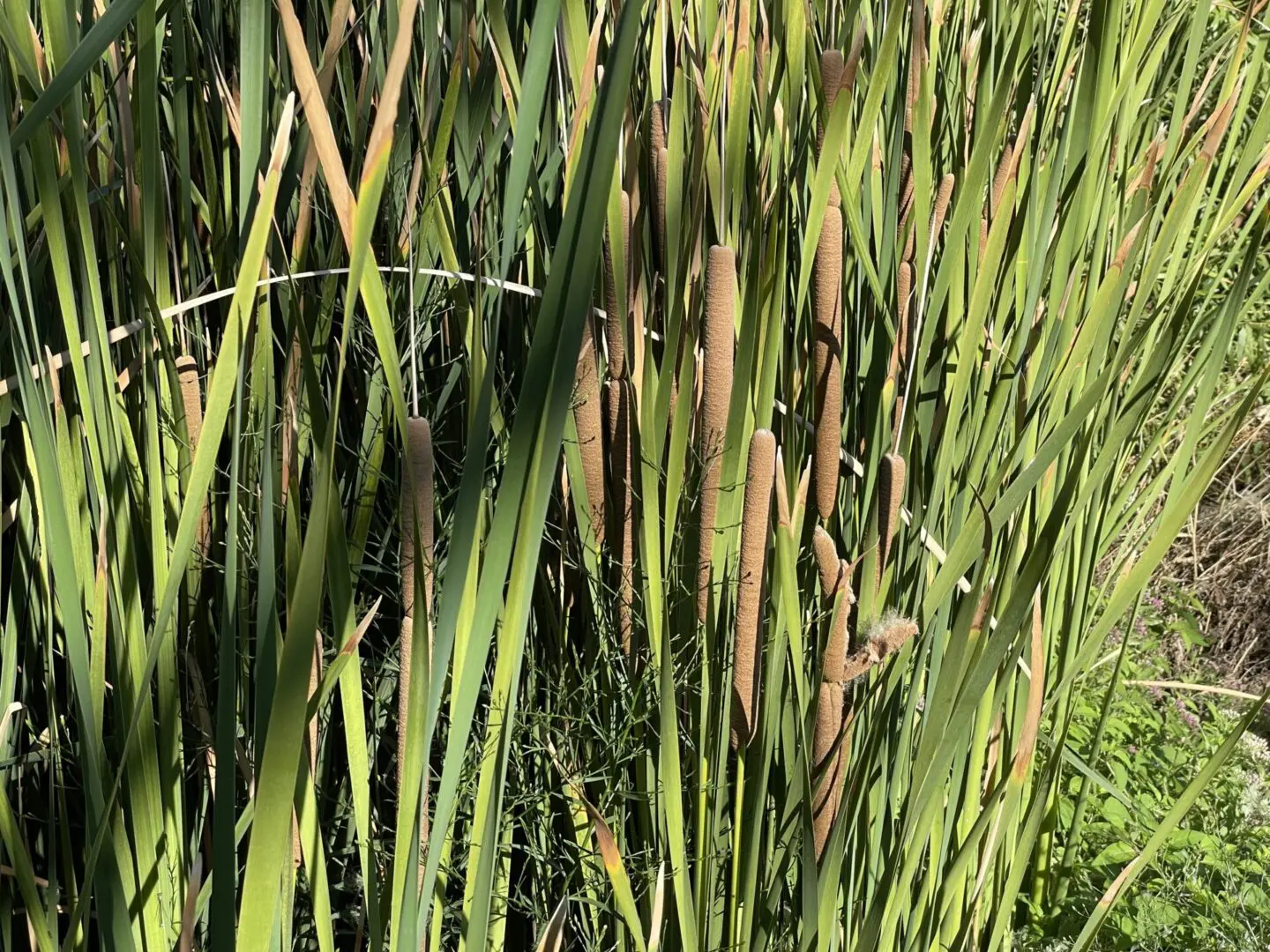The Southern Cattail

WHAT TALL, WATER-LOVING PLANT GOES BY MANY NAMES, INCLUDING HOTDOG-ON-A STICK, CAT-O’-NINE TAIL AND PUNK?
If you spend any time around the water sources in Clark County Wetlands Park, you’ll likely encounter the southern cattail (Typha domingensis). At six to 12-feet tall, with stiff, green, grass-like leaves, the plant bears distinctive, “hotdog-on-a-stick” shaped flowers near its tip that are hard to miss.
Southern cattail thrives in wet, slow-moving shallow water or stagnant marshy soil and reproduces by seed and the super thick rhizomes that it sends out with abandon. The species is monoecious (flowers from both sexes can be found on the same plant). That’s why you’ll often see the top of the seed head spike bearing a three to four-inch section containing the pollen (known as the stamin), separated by a one-half to one-inch space from the longer flower section (pistil), which resembles the “hotdog” below. There are many thousands of tiny flowers blooming in that dark, brown-colored seed-bearing portion of the plant, which when immature is dense and fibrous.
The plant’s internal leaf and root tissues have adapted to allow for the direct transfer of air between them, so they function somewhat like a snorkel. This allows the plant to survive being submerged in water for extended periods of time and it also has a high tolerance for alkalinity. These natural assets give the cattail the ability to proliferate itself like crazy in the brackish Park waters, which is why it’s considered an invasive plant.
While the widespread establishment of cattail stands requires mindful and ongoing management, the plants offer the Park a major benefit: erosion control. Like the sedges, bulrushes, and rushes that also line much of the Park’s waterways, cattails shore up loose soil, vegetation, rock, and other materials. That said, pulling up cattail rhizomes for invasive plant control is no picnic. For example, in the Las Vegas Wash, the operation can require the use of large bulldozers and other heavy equipment, especially near the weirs and other slower moving water areas.
Cattails offer benefits to Park wildlife. As the leaf blades are tough, they aren’t a good food source. Beaver, however, use the blades in their dam construction. Birds will use the “fluff” found inside the dried, mature seed heads in nestbuilding. Cattail stands are nesting sites for birds like marsh wrens and red-winged black birds, as well as some ducks. Small insects, amphibians, and fish use cattail rhizomes as a place to hide or rest.
For centuries, humans have found a plethora of uses for the southern cattail. In our area, Native Americans used the strong leaves to make chairs, mats, baskets, and thatch for roofs. The ripened male pollen was used as a paint or dye. Young root shoots and stems were consumed raw or cooked like asparagus. Even the young female spike of the plant was roasted (like a conventional hot dog) and ground to a mash for a mush or porridge or flour for bread! The mature seed fluff was used in bedding or mixed with tallow and chewed as gum.
As a child summering in New York State, I looked forward to cattail season. A few weeks before Labor Day, my Dad would make my siblings and I trek down to a nearby pond and harvest a batch of cattail spikes, which we fondly referred to as “punks.” Then, to add a ceremonial close to a barbecue dinner and the approach of twilight, my father would dip the punk tips in kerosene, plant the stalks strategically around our seating area, and then, in a flamboyant gesture, individually light them . I can tell you: every set of eyes in the group was in awe. For as long as 10 or 15 minutes, we’d be entertained!
– By Constance Carlson; photo by Chris Leavitt
Please enjoy these YouTube videos:
Importance of Cattails in Wetlands
All about Southern Cattail – Typha domingensis
